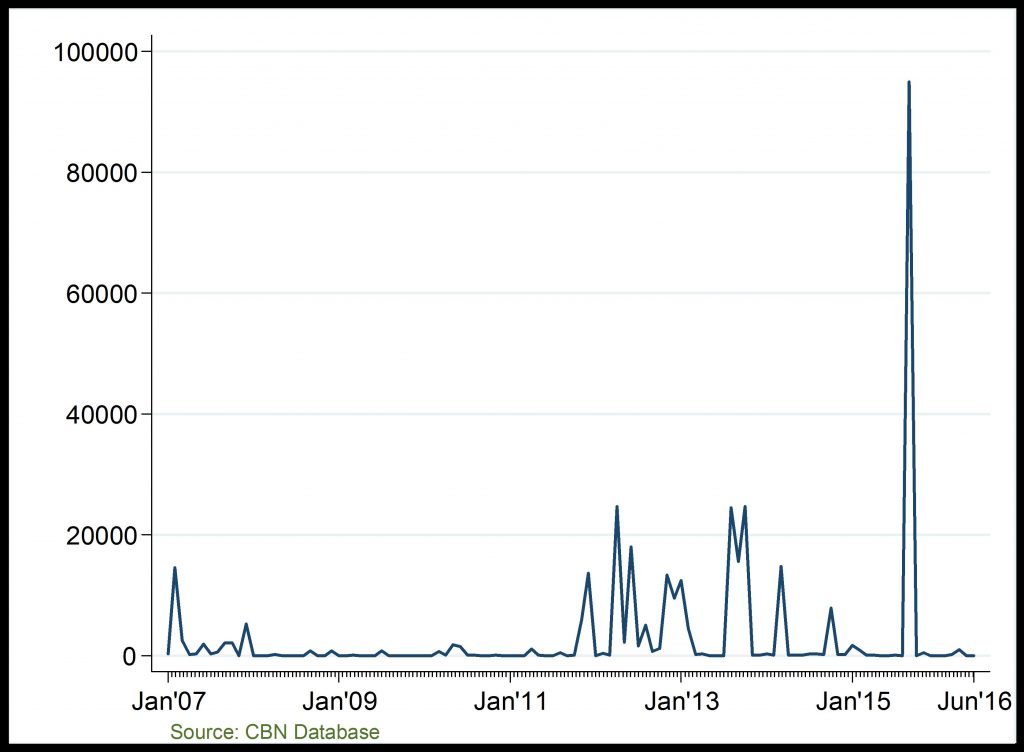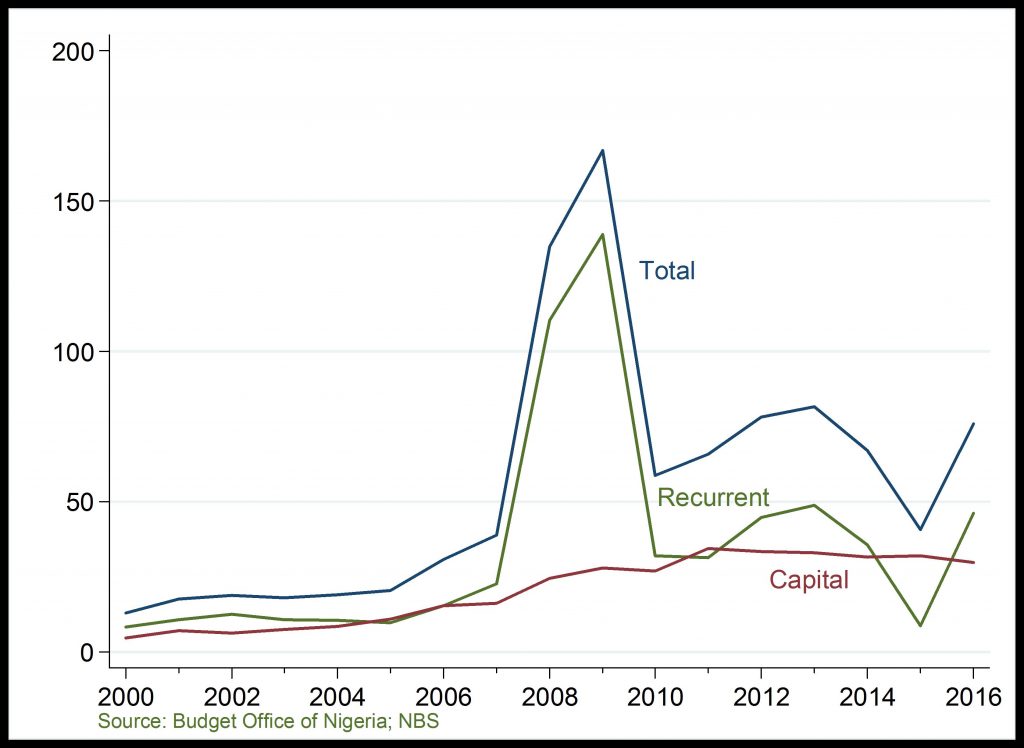Capital Importation And Budgetary Allocation
Capital Importation (US$ Thousand)
What happened in late 2015?

Budgetary Allocation (Billion )
Budgetary allocation for agriculture rise in 2016

Capital Importation: Foreign investment into the agricultural sector was relatively flat between 2007 and 2012 but gained unusual momentum in September 2015. The spike in 2015 is likely driven by the rise in investor confidence in line with the new governments strong stance on devaluation.
Budgetary Allocation: The proportion of the national budget allocated to the agricultural sector, which fell deeply in 2015, was increased in 2016, in both recurrent and capital expenditure in the sector. This is attributable to the present governments commitment to agriculture.
Related
CPI and its Component: Changes in inflation rate has mostly been driven by the Core sub-index component. Precisely, in 2016 Q1 and Q2, the rising cost of import, electricity and transport drove inflat
91-Day Treasury Bills: T-bill rate has highly fluctuated overtime on the account of the rise and fall in investor confidence, monetary policy easing/tightening, governments demand for funds, and infl
Appropriation Act (Budget): Capital expenditure remarkably increased in 2016 relative to preceding year, on the account of the present governments renewed commitment to infrastructure development.
Capital Importation: Given the positive outlook on the ITC sector in the past few years, investments in the sector reached a 10-year peak in 2014. However, the foreign investment fell marginally in 2


